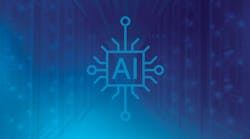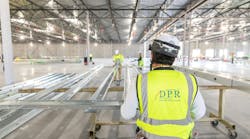New Network Considerations for Optimal Performance, Efficiency, and Sustainability
This launches our article series on efficiency and density points that are reshaping data center network architecture.
As a global community, we are more connected than ever before. These past few years, we’ve realized a few important points. First, our ability to connect is paramount to work and life balances. Second, these digital connections grow in importance every single year. Infrastructure leaders know that uptime, resiliency, and sustainability are at the forefront of helping people stay productive and connected.
However, not every data center facility is built the same, and not every supporting architecture for those facilities is designed equally. When working with cabling and connectivity systems, it’s key to reduce deployment challenges and ensure you have an intuitive design. To support emerging requirements, data center and facility leaders must look at reducing complexity, increasing density, and providing a better time-to-market pace. Most of all, this needs to be accomplished sustainably and efficiently.
This article series will explore four efficiency and density solutions that are helping data centers reshape the way they architect their critical infrastructure.
Introduction
There is no slowdown in the data center industry.
A new report from Fortune Business Insights indicates that the global demand for more efficient IT technologies combined with the economic advantages of modern, consolidated connectivity applications has contributed to the exponential rise in the scale and power of data centers. As the report points out, the global data center infrastructure market size is projected to reach $142.31 billion by 2027, compared to 2019, when the global market value stood at $94.56 billion.
The rapidly evolving competitiveness in the global market and advanced technologies such as cloud computing and big data have made it simpler and cheaper for enterprises to shift their workload to self-contained data centers.
Expanding utilization of data centers by companies amid the COVID-19 pandemic is fueling the growth of this market. Furthermore, the rapidly evolving competitiveness in the global market and advanced technologies such as cloud computing and big data have made it simpler and cheaper for enterprises to shift their workload to self-contained data centers.
It’s not always easy to shift to better designs with improved connectivity architecture. There are still real challenges facing distributed infrastructure as they work to support more users globally. Consider these emerging challenges:
You are trying to overcome time-to-market and supply chain issues, and lead times for gear and equipment are slowing you down. And you’re not the only one. Leaders in the digital infrastructure space are actively looking for new cabling and connectivity partners with global reach and new support capabilities.
Challenges with human error and inefficiency. We’ll expand on this in an upcoming article. However, installing and re-installing wiring and cabling systems isn’t only costly, it’s very time-consuming. Furthermore, you introduce cabling congestion and challenges with upkeep. Modern hyperscale and colocation facilities need to be clean and well-managed.
You’re working with non-standardized parts. When product designs aren’t craft-friendly and standardized, you’ll be challenged with scaling your infrastructure. Further, you’ll hit density issues as you try to support more customers.
You see challenges with non-scalable solutions and closed systems. Standardization is essential to ensuring the proper deployment of critical systems. The other key factor is the ability of your cabling systems to support emerging density requirements.
Download the entire report, How Four Efficiency and Density Points are Reshaping Data Center Network Architecture, featuring AFL, to learn more. In our next article, we'll explore how design and components have evolved.
About the Author




